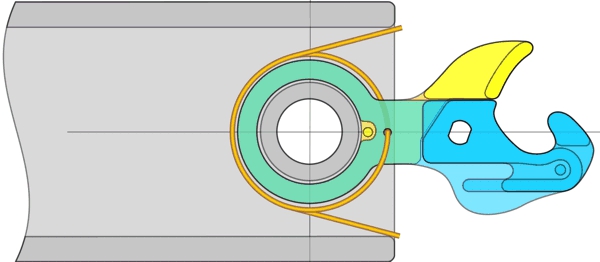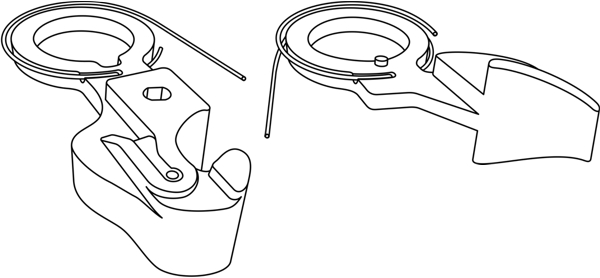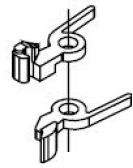A Brief History of the ProtoMate® N Scale Coupler
Having modeled in N Scale for nearly as long as the scale has existed, I naturally encountered the Micro-Trains (nee Kadee) Magne-Matic coupler when it was introduced in the early 1970s. Ever since then I've studied the coupler intensely in order to divine all of its secrets. As N Scale grew in popularity, so too did the popularity of the Magne-Matic, and with that popularity came scrutiny. Although it arguably helped grow the scale, its shortcomings became apparent: a pronounced "slinky" effect (wherein trains would oscillate lengthwise like an inchworm) and an unrealistic appearance.
Around 2005 I began to develop a new coupler: the ProtoMate. The goal was to address the flaws found in the Magne-Matic as well as all of its main competitors at the time. In addition, it would be compatible with all of the couplers on the market, which was an overwhelming preference among the modelers I interviewed—it would serve little purpose to produce a product that did not satisfy the wants of a majority of potential customers. By 2006 I had the means and ability to patent the design as well as trademark its name. However, shortly after announcing the forthcoming release of my ProtoMate, my personal life was turned inside-out, and I wasn't able to take its development any further.

ProtoMate Version 2.0
During the intervening years, I took a hard look at the design, and after a few failed attempts to fabricate a prototype, I determined that it would be too costly to manufacture the complex spring shape; indeed, it might not have been possible to mass-produce it at all. So, I scrapped everything but the knuckle geometry, and began a years-long process of developing a design that relied on a simplified spring while maintaining the advantages over its competitors, including the ability to retrofit existing couplers without having to replace the coupler box—again, an overwhelming preference expressed by modelers.

By 2017, I had a design that seemed to satisfy all of the requirements, and I set about making a prototype. However, shortly after I'd acquired a partner who could help take it to the next phase, I was diagnosed with advanced congestive heart failure—a terminal disease. I was faced with a choice: transfer ownership of the project to my partner, or allow the project to die with me. Naturally I chose the former option.
The ProtoMate Knuckle Geometry

 At the time it was designed and patented
(2006, Patent #6,994,224 B2), the ProtoMate knuckle was unique in the industry. Among
other things, note that the trip pin engages the full height of the knuckle; this ensured strength and stability, as well as improved
cosmetics, made possible by the design of the "thumb" shank (above, right). This unique aspect was noted in the patent. Today, the ProtoMate
knuckle geometry is no longer totally unique. Compare its design with the one to the right, recently released by a competitor. Although they
are suspiciously similar, make no mistake from whence the design originates. Below, the ProtoMate is on the left.
At the time it was designed and patented
(2006, Patent #6,994,224 B2), the ProtoMate knuckle was unique in the industry. Among
other things, note that the trip pin engages the full height of the knuckle; this ensured strength and stability, as well as improved
cosmetics, made possible by the design of the "thumb" shank (above, right). This unique aspect was noted in the patent. Today, the ProtoMate
knuckle geometry is no longer totally unique. Compare its design with the one to the right, recently released by a competitor. Although they
are suspiciously similar, make no mistake from whence the design originates. Below, the ProtoMate is on the left.

The Future of the ProtoMate
As of this writing, the coupler is entering the prototype phase, and the results so far are encouraging. However, I probably won't live to see the outcome of its development. No matter; I'm just grateful the project is in good hands.

If the project continues as planned, a "Z Scale" version of the coupler (intended to be a close-to-scale representation in N Scale) may be forthcoming. This may or may not feature its own close-to-scale, non-compatible draft gear box, which would satisfy the wants of more discriminating N Scale modelers interested in accurate appearance while maintaining the same functionality. Admittedly this would be harder to sell to a manufacturer, so its release would depend on the success of the original N Scale version.
The Railwire is a good place to follow its progress. Happy modeling!
—DKS, January 2021
